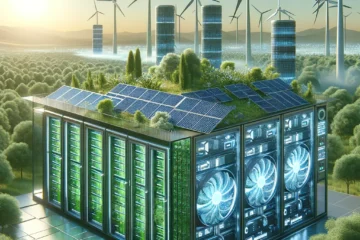In the wake of rising environmental concerns, the push towards sustainability has never been more critical. Among the myriad strategies to combat environmental degradation, eco-friendly packaging stands out as a beacon of innovation and hope. This article delves into the realm of eco-friendly packaging, examining how it’s paving the way for a greener tomorrow by significantly reducing environmental impact. Through a lens focused on sustainability, innovation, clean technology, and waste reduction, we’ll uncover the transformative power of these packaging solutions.
Eco-Friendly Packaging: A Gateway to Sustainability
Eco-friendly packaging embodies the principle of sustainability by minimizing waste and reducing the carbon footprint associated with traditional packaging methods. It involves the use of materials and processes that are not only safe for the environment but also sustainable in the long term. This approach to packaging is crucial in addressing the pressing issue of waste accumulation, especially in landfills and oceans, where plastic pollution has become a grave concern.
The shift towards eco-friendly packaging options reflects a broader commitment to sustainability. Companies are increasingly adopting biodegradable, compostable, and recyclable materials in their packaging solutions. From plant-based plastics to mushroom packaging, the innovation in this field is not only fascinating but also highly effective in promoting environmental conservation. Moreover, the lifecycle assessment of these materials shows a significant reduction in carbon emissions, further cementing their role in achieving sustainability goals.
Innovation Driving Change in Packaging
Innovation is at the heart of the evolution of eco-friendly packaging. As we venture into the future, technology plays a pivotal role in developing new materials and processes that reduce environmental impact. One notable innovation is the use of nanotechnology in packaging materials to enhance their strength, durability, and biodegradability. This technological advancement means that less material is needed for packaging, reducing waste even further.
Another groundbreaking innovation is the development of edible packaging, which not only reduces waste but also offers an additional nutritional benefit. Made from natural, biodegradable ingredients, edible packaging is a testament to the creativity and ingenuity driving the shift towards more sustainable packaging solutions. Furthermore, the use of digital printing on eco-friendly materials minimizes the use of harmful chemicals, showcasing how innovation can harmonize environmental conservation with practical packaging needs.
Clean Technology in Packaging Production
The production of eco-friendly packaging is inextricably linked to clean technology. Clean technologies ensure that the manufacturing process of packaging materials is environmentally friendly and energy-efficient. For instance, the use of solar or wind energy to power production plants significantly lowers the carbon footprint of packaging manufacturing.
Moreover, clean technology facilitates the recycling and composting of packaging materials, making the process more efficient and less harmful to the environment. Innovations in sorting and recycling technologies have greatly improved the recyclability of packaging materials, ensuring that they are reused or repurposed instead of ending up as waste. This not only conserves resources but also reduces the demand for virgin materials, further decreasing environmental impact.
The Role of Waste Reduction in Eco-Friendly Packaging
Waste reduction is a fundamental aspect of eco-friendly packaging. By designing packaging with minimal material and maximizing its recyclability or compostability, companies can significantly reduce the amount of waste generated. This approach, known as “source reduction,” prioritizes the use of less packaging material without compromising the product’s integrity or consumer experience.
Furthermore, the implementation of take-back programs and initiatives encouraging consumers to recycle or compost packaging plays a crucial role in reducing waste. These programs not only ensure that packaging is properly disposed of but also raise awareness about the importance of responsible consumption practices. Additionally, the move towards a circular economy, where materials are kept in use for as long as possible, highlights the importance of waste reduction in achieving sustainable packaging solutions.
Conclusion
Eco-friendly packaging innovations are leading the charge in reducing environmental impact, driven by the principles of sustainability, innovation, clean technology, and waste reduction. These advancements not only offer practical solutions to the pressing issue of waste accumulation but also demonstrate a commitment to preserving our planet for future generations. As we continue to explore and implement these innovative packaging solutions, we move closer to a sustainable future where environmental conservation and economic growth go hand in hand. The journey towards eco-friendly packaging is not just a trend but a necessary shift in how we think about and interact with our environment, ensuring that we leave a positive legacy for the generations to come.




